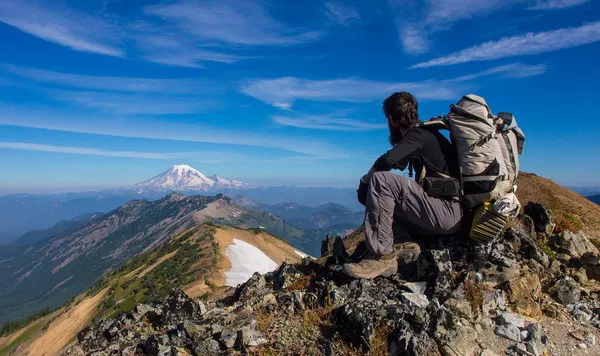In the realm of mountaineering, certain peaks stand out as iconic challenges that beckon adventurers from around the globe. These monumental mountains not only test physical prowess but also inspire the human spirit with their majestic beauty and formidable presence. For those seeking to conquer some of the world’s most renowned summits, here is a curated list of bucket list mountains that should be on every climber’s radar.
1. Mount Everest, Nepal/Tibet
Topping the list is the legendary Mount Everest, Earth’s highest point at 8,848 meters (29,029 feet). Situated on the Nepal-Tibet border, Everest has captured the imagination of climbers for decades. The journey to its summit demands not only technical skill but also unwavering determination. Despite the commercialization of expeditions in recent years, Everest remains a formidable challenge due to its extreme altitude and unpredictable weather. Climbers must acclimatize to the thin air of the Death Zone and navigate treacherous crevasses and icefalls. Summiting Everest is the ultimate dream for many mountaineers, a feat that represents the pinnacle of human endurance and perseverance.
2. K2, Pakistan
Known as the Savage Mountain, K2 is the second-highest peak in the world at 8,611 meters (28,251 feet). Located in the Karakoram Range of Pakistan, K2 is notorious for its technical difficulty and severe weather conditions. The ascent to its summit is considered one of the most challenging in the mountaineering world, with steep rock faces and unpredictable avalanches posing constant threats. Despite its lower elevation compared to Everest, K2 is often regarded as a more demanding climb due to its technical nature. Successfully summiting K2 is a testament to elite climbing skills and a deep respect for the mountain’s unforgiving terrain.
3. Aconcagua, Argentina
Standing tall as the highest peak in South America, Aconcagua reaches an impressive height of 6,960 meters (22,837 feet). Located in the Andes mountain range of Argentina, Aconcagua offers a non-technical climb that attracts adventurers seeking high-altitude experience without extensive technical demands. However, don’t be fooled by its accessibility—Aconcagua’s extreme weather and altitude present significant challenges. Summiting Aconcagua requires proper acclimatization and physical endurance, making it an ideal target for climbers preparing to tackle the world’s highest peaks.
4. Denali (Mount McKinley), Alaska, USA
Rising majestically in the Alaskan wilderness, Denali stands as North America’s highest peak at 6,190 meters (20,310 feet). Known for its extreme weather and unpredictable conditions, Denali presents a formidable challenge even to experienced climbers. The climb involves navigating glaciers, enduring freezing temperatures, and battling fierce winds. Denali’s remoteness and harsh environment demand self-sufficiency and advanced mountaineering skills from those attempting its summit. Successfully conquering Denali is a significant achievement that showcases resilience and adaptability in the face of extreme conditions.
5. Mont Blanc, France/Italy
Mont Blanc, the highest peak in the Alps at 4,808 meters (15,774 feet), attracts climbers with its stunning alpine scenery and accessible routes. Situated on the border between France and Italy, Mont Blanc offers a range of climbing options, from relatively straightforward ascents to more challenging technical routes. Summiting Mont Blanc requires physical fitness and basic mountaineering skills, making it an excellent introduction to high-altitude climbing for those new to the sport. However, climbers should not underestimate the mountain’s dangers, including crevasses, rockfall, and rapidly changing weather.
6. Mount Elbrus, Russia
As Europe’s highest peak, Mount Elbrus towers at 5,642 meters (18,510 feet) in the Caucasus Mountains of Russia. Despite its impressive elevation, Mount Elbrus is considered one of the more accessible of the Seven Summits, with a non-technical climb along its standard route. However, climbers must still contend with altitude-related challenges and variable weather conditions. Summiting Mount Elbrus provides a taste of high-altitude mountaineering and offers breathtaking views of the surrounding Caucasus Range.
7. Matterhorn, Switzerland/Italy
The Matterhorn, with its iconic pyramid shape, is one of the most recognizable peaks in the world. Straddling the border between Switzerland and Italy, this 4,478-meter (14,692 feet) mountain presents a challenging climb with technical rock faces and steep ridges. Summiting the Matterhorn requires rock climbing proficiency and a head for exposure, as sections of the ascent involve navigating narrow passages and sheer drops. Despite its popularity, the Matterhorn demands respect and careful preparation due to its unpredictable weather and challenging terrain.
Conclusion
Embarking on a journey to climb these bucket list mountains is not merely about conquering summits; it’s a profound exploration of human resilience, determination, and respect for nature’s grandeur. Each mountain on this list offers a unique set of challenges and rewards, from the icy slopes of Everest to the sheer rock faces of the Matterhorn. Whether you’re a seasoned mountaineer or an aspiring adventurer, tackling these iconic peaks will undoubtedly leave an indelible mark on your life’s adventure story. So, prepare your gear, train your body and mind, and set your sights on the next epic summit—it’s time to make your mark on the world of mountaineering.

